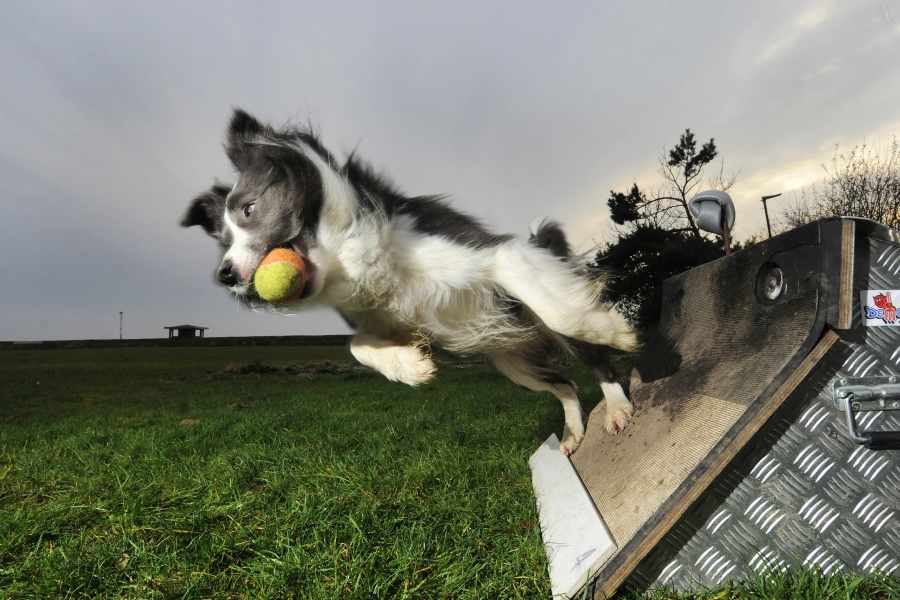In the world of canine sports, fly ball dogs stand out for their incredible agility, speed, and teamwork. This exhilarating sport captures the essence of what it means to bond with our furry friends while showcasing their athletic prowess. Fly ball is not just about racing; it's a thrilling relay game that has fascinated dog lovers and trainers alike, creating a vibrant community that celebrates the capabilities of our canine companions.
As we delve into the captivating universe of fly ball dogs, we will explore their training, the competitions they participate in, and the unique characteristics that make these dogs exceptional athletes. From the heart-pounding races to the joy of teamwork, fly ball is more than just a sport; it’s an adventure that strengthens the bond between dogs and their human handlers. Whether you are a seasoned participant or a curious newcomer, the world of fly ball offers endless excitement and opportunities for growth.
Throughout this article, we will uncover fascinating insights about fly ball dogs, answering common questions and providing valuable tips for those interested in joining this dynamic sport. The journey of fly ball dogs is not just about the chase; it’s about dedication, training, and the joy of competition. Let’s dive in and discover what makes fly ball dogs truly remarkable!
What is Fly Ball and How Does It Work?
Fly ball is a high-energy relay race that involves teams of four dogs. Each dog must jump over a series of four hurdles, trigger a spring-loaded box to release a tennis ball, and race back over the hurdles while carrying the ball. The next dog can only start once the previous dog has completed its run, making it a true test of speed and teamwork.
What Makes Fly Ball Dogs Unique?
Fly ball dogs are often characterized by their enthusiasm, agility, and strong drive to compete. Breeds commonly seen in fly ball competitions include:
- Border Collies
- German Shepherds
- Labrador Retrievers
- Jack Russell Terriers
- Golden Retrievers
These breeds typically possess the physical attributes and temperament suited for the fast-paced nature of fly ball. Their ability to work well with a handler and their eagerness to retrieve make them ideal candidates for this sport.
How to Train Fly Ball Dogs?
Training fly ball dogs involves several key steps:
- Basic Obedience: Ensure your dog has a solid foundation in basic commands.
- Jump Training: Introduce your dog to hurdles gradually, allowing them to gain confidence.
- Box Training: Teach your dog to trigger the box and retrieve the ball without hesitation.
- Relay Practice: Gradually introduce them to the relay component, emphasizing teamwork.
Training requires patience, consistency, and positive reinforcement to help build your dog’s skills and confidence in the sport.
Are There Competitions for Fly Ball Dogs?
Yes, fly ball dogs can participate in numerous competitions held across the country and internationally. These events vary in size and scope, from local tournaments to prestigious championships. Competitions typically have several divisions based on the dog’s skill level and experience, ensuring that dogs of all capabilities can participate and enjoy the thrill of racing.
What Are the Benefits of Fly Ball for Dogs?
Engaging in fly ball offers numerous benefits for dogs, including:
- Physical Exercise: Fly ball provides an excellent workout, promoting cardiovascular health and muscle development.
- Mental Stimulation: The sport challenges dogs to think and react quickly, enhancing their cognitive skills.
- Socialization: Fly ball fosters a sense of community, allowing dogs to interact with others while competing.
- Strengthened Bond: Training and competing together helps deepen the bond between dogs and their handlers.
Can Any Dog Participate in Fly Ball?
While certain breeds excel in fly ball, any dog with a good temperament and a love for play can participate. It's essential to consider the dog's physical condition and ensure they are healthy enough to engage in such an active sport. Owners should consult with their veterinarian before starting training to determine if their dog is a suitable candidate for fly ball.
What Gear Do Fly Ball Dogs Need?
Fly ball dogs require specific gear to ensure their safety and comfort during training and competitions. Essential items include:
- Collar and Leash: A durable collar and a secure leash are necessary for training sessions.
- Fly Ball Harness: A fitting harness can provide support and comfort while running.
- Hurdles: Practice hurdles help dogs familiarize themselves with the jumping aspect of fly ball.
- Fly Ball Box: A training box allows dogs to practice triggering and retrieving the ball.
How to Get Started with Fly Ball?
To begin your journey in the world of fly ball dogs, consider the following steps:
- Research local fly ball clubs or organizations.
- Attend workshops or classes to learn about the sport.
- Start training your dog with basic obedience and gradually introduce them to fly ball techniques.
- Participate in practice sessions to build confidence and skills.
With dedication and persistence, you and your dog can become an unstoppable team in the thrilling world of fly ball!
Conclusion: Why Fly Ball Dogs are a Joy to Watch
Fly ball dogs epitomize the spirit of canine sports, showcasing their athleticism, intelligence, and unyielding enthusiasm. Whether you are a dog owner, a trainer, or a spectator, the excitement of watching fly ball dogs in action is unparalleled. This unique sport not only strengthens the bond between dogs and their handlers but also fosters a sense of community among enthusiasts. So why not consider diving into the world of fly ball and unleash the potential of your furry friend? The journey is bound to be rewarding and filled with joy!



